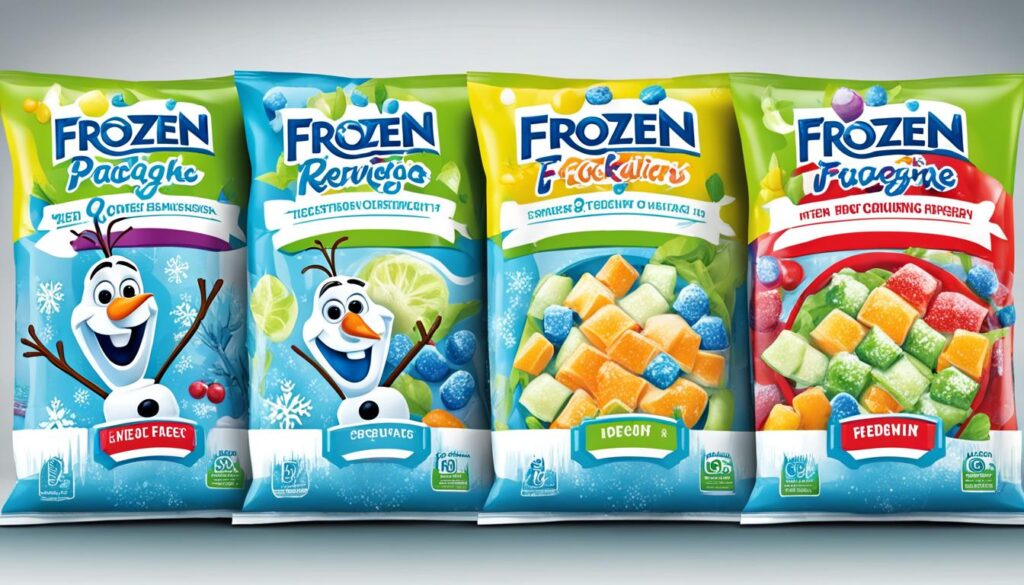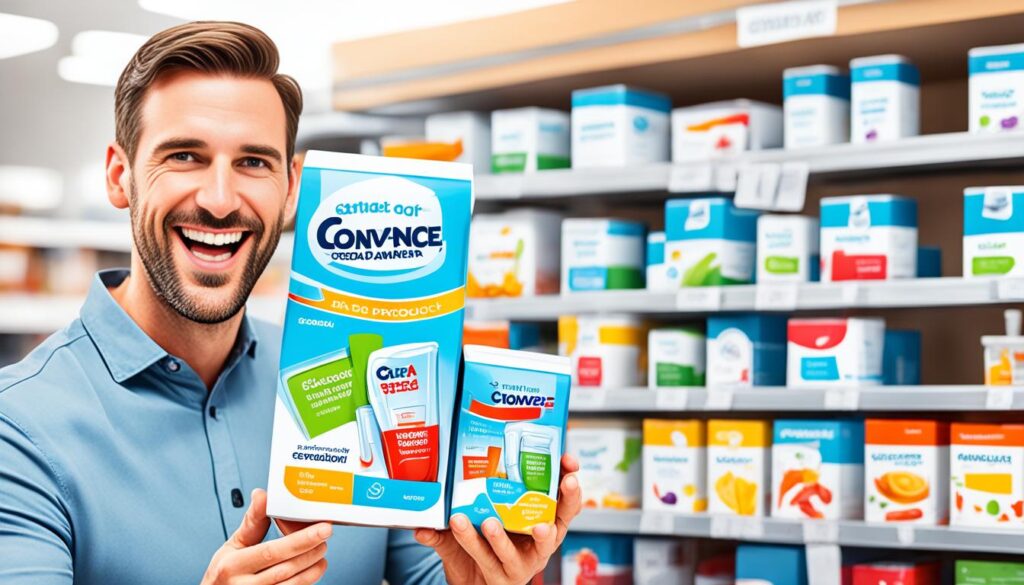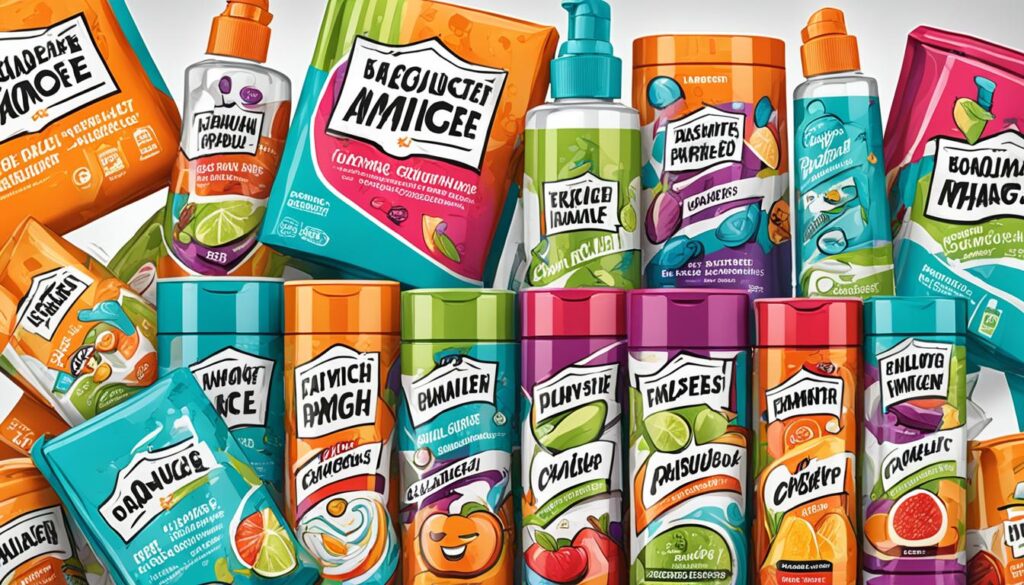In today’s market, innovative packaging design is key. It’s often the first thing people see when they look at a product. This can greatly affect what they decide to buy. A survey found that 72% of Americans say packaging influences their choices, and 67% care about the materials used.
The way a product looks on the shelf matters a lot. A good design grabs attention and shapes how people see the brand. It can make people think a product is the best choice without them even realizing it. Since Americans spend over $14 trillion a year, packaging plays a big part in this.
A 2020 survey also showed that people want sustainable packaging. Over 60% said they’d pay more for it. This shows how important it is to have products that are good for the planet. Products with these claims have grown by 28% over five years.
Now, products with ESG claims make up almost half of sales in some categories. This shows how important product packaging design is for success. By using innovative packaging design, companies can meet what customers want and stand out in a market that cares more about being eco-friendly.
The Role of Packaging in Competitive Markets
In today’s competitive market, packaging is key to a product’s success. It boosts brand visibility and helps products stand out. The look of the packaging greatly affects what customers choose to buy.
Consumers are now more aware of packaging trends. In the 1990s, private label brands became popular by offering great packaging at lower prices. Now, over half of U.S. branded consumer goods makers also make private-label products. They use packaging to grab shoppers’ attention.
Mainstream brands are also paying attention to packaging. They use innovative designs to connect with customers and show off their quality. This helps them stay ahead in a crowded market.
When it comes to making a choice, packaging matters a lot. Mainstream brands can beat their rivals by offering special items and eye-catching packaging. This meets what customers want.
Now, there’s a big push for eco-friendly packaging. Brands are focusing on designs that look good and help the planet. This approach is changing how customers make decisions.
The Psychological Aspects of Packaging
Packaging has a big impact on how we choose what to buy. It grabs our attention and helps us decide. Visual appeal is a big part of this. Studies show that the colors on packaging can make us think a product is healthier or tastes better (Kunz et al., 2020). Also, the colors and labels on food packaging can make us think it’s healthier and want to buy it more (Huang & Lu, 2016).
Creating an emotional connection with packaging is key. Things like colors, fonts, and graphics tell stories that make us feel something. For example, red can make us hungry, while green makes us think of health and freshness. This matches the trend of eating healthier.
Consumer perceptions are shaped by how clearly a product is presented. This helps us make better choices and trust the brand more. Personalized packaging that matches our lives can make us feel closer to the brand. This makes us more engaged with the product.
Cognitive processes also play a big role in packaging design. By knowing how we see and understand package details, brands can make their packaging more effective. Studies show that the shape and color of packaging can set our expectations about the product’s taste and quality (Ares & Deliza, 2010; Schnurr, 2019).
In the end, the psychological aspects of packaging are very important. They shape how we see and choose products. By using visual appeal, emotional connections, and understanding how we think, brands can really affect our choices with smart packaging.
Colors, Fonts, and Graphics in Packaging
In packaging, colors, fonts, and graphics are key to a brand’s identity and engaging consumers. They tell a story through visuals. For example, red can make people feel excited and is great for energetic products. Blue, on the other hand, makes people trust and depend on a brand, perfect for a professional look.
Fonts also shape how people see a product and its brand. Elegant fonts suggest luxury, while bold fonts mean something is affordable and straightforward. Graphics add more to the story, giving non-verbal hints about the product. For instance, detailed designs can show it’s made with care, while simple graphics highlight simplicity.
Great packaging uses these elements to speak to its audience. For example, bright colors in frozen fruit packaging show it’s fresh and healthy. This approach makes the product’s benefits clear and boosts brand memory.
Graphics help make products stand out and differentiate brands. Custom stickers and inserts make a brand more recognizable and personal. Adding QR codes can also engage customers by offering more info or deals instantly.
When colors, fonts, and graphics match a brand’s values and what consumers want, it’s powerful. This approach makes packaging not just look good but also clearly share the brand’s message. The right mix of these elements can make packaging a strong brand ambassador, driving action and loyalty.
Private Label Frozen Food Packaging
In today’s market, private label frozen food packaging must do more than just work well. It needs to grab the consumer’s attention. If you’re a convenient food supplier or an on-the-go food service, your packaging is key to standing out.
Private label frozen food packaging is crucial for brands wanting to stand out. The VICS team is always innovating to cut costs, boost sensory appeal, and increase nutritional value. This makes it easy for small businesses and startups to offer unique products to more people.
Produced in an FDA-approved facility in Indiana, safety and quality are top priorities. This is essential for grab-and-go food suppliers and easy meal options vendors to gain trust and loyalty. The facility also offers recipe development and consulting to help brands improve their products.
The packaging should match the brand’s identity and support its convenience focus. It must look good and work well, making shopping easy for consumers. For on-the-go food services, attractive and convenient packaging can really sway buying decisions.

The private label industry is flexible and custom. Each project is made to highlight the product’s unique qualities. This lets brands offer a wide variety of foods, meeting different consumer needs. Customization helps brands stand out with unique and attractive packaging.
Private label frozen food packaging is more than just a container. It’s a critical part of a brand’s strategy that affects consumer choices and boosts market presence.
The Importance of Sustainable Packaging
Nowadays, being eco-friendly is key for buyers, with many choosing products with sustainable packaging. About 67% of people worldwide look for sustainable packaging when shopping. This makes brands focus on using recyclable materials and practices that help the planet.
Companies like Aldi are using eco-friendly refrigerants for their frozen foods. This move helps them meet their sustainability goals. Brands like NadaMoo! and Oatly Frozen also use renewable packaging. These changes meet what customers want and help reduce waste a lot.
The Sustainable Forestry Initiative (SFI) supports eco-friendly packaging with certified paperboard. Brands like Big Country Raw and Strauss Family Creamery have made big changes. Strauss Family Creamery gets 80% of their glass milk bottles back, keeping almost 500,000 containers out of landfills each year. This shows how recyclable packaging can really help the environment.
Reusable products are becoming more popular too. The Reusable Packaging Association believes reusable items will lead the packaging industry by 2030. For example, Toronto’s Reego program shows that switching to reusable cups for takeout coffees can save over 7 million disposable cups from landfills.
The American Frozen Food Institute says frozen foods are key to being sustainable. They help reduce food waste with better preservation and portion control. New freezing technologies also improve food quality and cut down on carbon emissions. This makes frozen foods a good choice for the planet and for health.
Companies like McDonald’s, Unilever, and Coca-Cola aim to improve their packaging by 2025. They want to increase recycling and use more recycled materials. Teaching people about sustainable packaging is important to get them on board and tackle the challenges of eco-friendly packaging.
As the market changes, the need for sustainable, recyclable, and eco-friendly packaging grows. Companies need to match their plans with what environmentally aware consumers want. This builds trust and loyalty, making a big difference for the planet.
Convenience and Ease of Use in Packaging
Today, consumer satisfaction is big on convenience and easy use in packaging design. Brands are adding resealable packaging, ergonomic packaging, and designs that put users first. This makes the user experience better.

In 2020, 44% of consumers said reclose features were very important, up from 28% in 2018. This shows more people want resealable packaging to keep things fresh and cut down on waste. It also helps with user experience and loyalty to brands.
Ergonomic packaging is key for making things easier to use. Packages that fit well in your hand and are easy to open make life simpler. This boosts consumer satisfaction and makes people want to buy again.
Pre-portioned packets are getting more popular too. 80% of people like them because they stop the need to repackage food. This type of packaging is convenient and helps reduce food waste, which is good for the planet.
In short, resealable packaging and ergonomic packaging are big for consumer satisfaction. Making things easy to use and improving the user experience helps brands grow and keep customers for the long haul.
Storytelling and Branding Through Packaging
In the food industry, packaging is key to standing out and engaging with customers. By 2021, the global market for processed foods hit about $2.3 trillion. It’s expected to grow to $3.7 trillion by 2030, at a 5.8% annual growth rate. This shows how crucial it is to tell a brand’s story through packaging.
Brands like Campbell Soup and General Mills use stories in their packaging to connect with people. Innova Insights says storytelling is a top trend in food marketing. About 72% of consumers prefer to buy foods from brands they know, proving the power of a good story.
Creative packaging turns a simple buy into something memorable, building loyalty. The RTE meal market was worth $72 billion in 2020 and is growing at 6.5% a year. Stories on labels capture the audience’s imagination and create a bond.
Also, 58% of consumers let social media guide their food choices in 2020. Using photos on packaging tells stories that touch people’s hearts. This digital storytelling matches the habits of over 3 billion social media users, showing the strength of real brand stories.
In short, telling a brand’s story through packaging is vital to stand out and build a strong bond with customers. It boosts engagement, trust, and loyalty, leading to success in a tough market.
Functional Design Elements
Functional design is key in packaging, making sure products work well and are easy to use. Brands aim to make packaging that looks good and is practical. For example, flexible packaging like stand-up pouches is popular for snacks and desserts because it’s light and easy to handle.
This design makes life easier for busy people, letting them store and grab products on the go.
Creating packaging that makes products easier to use is a big part of functional design. Gatorade uses sports caps on their bottles so athletes can drink without stopping. In the frozen food world, sealed packaging keeps ice crystals out, keeping food fresh and tasty.
Products in airtight containers like cans keep fruits and veggies fresh. This is important because a lot of food in the U.S. gets thrown away, mostly because of bad packaging, says the American Frozen Food Institute.
Designers are also focusing on making packaging sustainable without losing its usefulness. Aluminum foil is great for frozen meals because it goes from freezer to oven without issues. Emmerson Packaging’s MicroPack™ lets you steam veggies right in the package, combining ease with caring for the planet.
These new packaging ideas meet consumers’ need for quick and easy use. They also match the growing desire for eco-friendly packaging.

